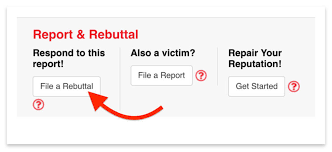Table of Contents
ToggleWhen it comes to protecting your business or service, there is no greater enemy than Ripoff Report. This website, which boasts more than 1.5 million reports filed by consumers, can severely damage a company’s reputation and diminish its credibility. Unfortunately, many businesses are unaware of how to push down these negative reports and restore their good standing in the public eye. Fortunately, there are steps you can take to proactively combat the problem of Ripoff Report. In this article, we’ll provide an overview of how to push down Ripoff Report and reclaim your hard-earned reputation.
What is Ripoff Report?
Ripoff Report is an online platform that allows consumers to post reviews about companies and services. The website has gained a significant amount of attention since its launch in 1998, as it offers a unique way for customers to share their experiences with businesses. It is important to note that Ripoff Report does not verify or investigate the reports posted on its site, which can lead to inaccurate information being shared. As such, it is possible for businesses to be unfairly targeted and negatively portrayed by false reports. This can have serious consequences for a business’s reputation and credibility, so it is important to understand how to manage any negative content posted on Ripoff Report.
Understanding the Problem
Understanding the problem of negative reviews on Ripoff Report is essential to protecting your business’s reputation. While it is impossible to remove all negative content from the site, there are steps that can be taken to reduce its visibility and minimize its impact. First, it is important to understand how Ripoff Report works and what types of reviews may appear on the site. Generally speaking, reports may be posted by customers who have had a bad experience with a service or product, or by competitors looking to damage another business’s reputation. The website does not have an official system for verifying reviews, which can lead to inaccurate information being shared.
If you used your credit card or bank account to pay a scammer, report it to the card issuer or bank. Also report scams to the major credit reporting agencies. Place a fraud alert on your credit report to prevent someone from opening credit accounts in your name.
External Link: https://consumer.ftc.gov/articles/what-know-about-credit-freezes-fraud-alerts
Identifying False Statements & Original Complaints
Identifying false statements and original complaints on Ripoff Report is an important step in protecting your business’s reputation. False statements can be identified by verifying the facts of the complaint and cross-referencing it with other sources. Original complaints, on the other hand, can be more difficult to identify since they are often subjective in nature. In order to identify these complaints, businesses should consider researching any patterns or similarities between different reports about their company.
Researching the Details of the Complaint
Researching the details of the complaint on Ripoff Report is an important step for businesses looking to protect their reputation. To begin, businesses should look up the specific details of the complaint and verify them with other sources. Additionally, businesses may want to research any patterns or similarities between different reviews in order to identify original complaints. Finally, businesses should also consider reaching out directly to the reviewer in order to gain further insight into what caused them to post a negative review.
Learn about Social Security-related scams. Report these scams using Social Security’s online reporting form.
External Link: https://secure.ssa.gov/ipff/home
Reviewing Consumer Protection Laws
Reviewing consumer protection laws is an important step for businesses looking to protect their reputation. Consumer protection laws exist to ensure that customers are being treated fairly and that businesses are held accountable for their actions. It’s important to be aware of the different types of consumer laws such as those related to product safety, warranties, promotions, advertising and pricing. Taking the time to review any applicable laws in your area can help you identify potential issues before they arise and take steps to ensure that your business remains compliant with all relevant regulations.
Locating & Contacting Consumers Who Filed Reports
Locating and contacting consumers who have filed Ripoff Reports can be a tricky process. Fortunately, there are a number of tools available to help you locate the person who is making the report against your business. The first step is to search for the user’s handle on Google or other search engines. This will provide you with information about where they have posted their complaint as well as any contact details associated with that account. You can also use social media sites such as Facebook and Twitter to find people who have made reports against your business.
Establishing Positive Content to Counter Negative Reports
Creating positive content to counter negative reports on Ripoff Report is an important part of reputation management. The first step is to create a comprehensive online presence, such as a website or blog, that reflects the values and services offered by your business. Ensure that you are active and consistent across all social media platforms so that potential customers can find accurate information about your products or services. Additionally, take advantage of review sites like Yelp, Google Reviews, and TripAdvisor in order to collect customer feedback that can be shared with potential customers.
Generating Online Reviews & Posts
Generating online reviews and posts is an important part of reputation management. Encourage your customers to leave positive reviews on sites like Yelp, Google Reviews, TripAdvisor, and other review sites. You can also reach out to customers with surveys or feedback forms in order to collect their thoughts on your products and services. Additionally, consider having a presence on social media platforms such as Facebook, Twitter, Instagram, and LinkedIn so that you can engage with your customers directly.
Creating a Professional Website for Your Business or Service
Creating a professional website for your business or service is essential to building an online presence and attracting potential customers. Start by hiring a web designer or developer who can create a website that is easy to navigate, visually appealing, and optimized for SEO. You should also consider including customer testimonials, detailed descriptions of services offered, contact information, and other relevant content. Once your website is designed and developed, make sure to keep it up-to-date with fresh content such as blog posts or articles.
Networking with other Professionals in Your Industry
Networking with other professionals in your industry is an important step to growing your business. Establishing meaningful relationships with individuals who have similar interests and goals can help you learn more about the industry, develop valuable contacts, find new opportunities, and build a strong reputation. Start by attending industry events such as conferences or workshops. You can also join online communities such as LinkedIn or Facebook groups to connect with people in your field. Additionally, consider joining professional organizations related to your field which often host networking events.
Utilizing Social Media Platforms to Build Connections & Promote your Business or Service
Social media is a powerful tool to connect with others, build relationships, and promote your business or service. Utilizing social platforms such as Facebook, Twitter, Instagram, and LinkedIn can help you reach potential customers in a cost-effective and timely manner. Start by creating an account for your business on each platform. Then create content that will be interesting and relevant to your audience. This could include images, videos, blog posts, and special offers. Once you have established an audience base on the platform of your choice, use it to post regularly about your products or services.
Executing a Search Engine Optimization (SEO) Strategy
Search engine optimization (SEO) is an effective way to reach potential customers online. By optimizing your website and content for relevant keywords, you can increase the visibility of your business or service on search engines like Google and Bing. To get started with SEO, begin by researching and understanding the types of keywords that are relevant to your business or service. Then create content that is optimized for those relevant keywords, including blog posts, videos, infographics, etc.
Researching Relevant Keywords for Your Business or Service Optimizing Site Content
Researching Relevant Keywords for Your Business or Service
Researching relevant keywords is the first step towards executing a successful SEO strategy. Start by understanding what kind of terms and phrases potential customers are likely to use when searching for your business or service. Identify the most important keywords related to your industry and develop a list of them.
Optimizing Site Content with Targeted Keywords
Once you have identified relevant keywords, it’s time to optimize your site content with those targeted keywords. Start by creating content that is optimized for those specific terms and phrases. This could include blog posts, videos, infographics, etc., all of which should be written in an engaging manner while still targeting those important keywords.
Building Quality Backlinks to Improve Ranking
In addition to optimizing your site content with targeted keywords, building quality backlinks is another effective way to improve your ranking on search engine results pages (SERPs).
Joining Consumer Sentinel Network & Other Resources Understanding Consumer Sentinel Network
Joining Consumer Sentinel Network & Other Resources
The Consumer Sentinel Network is a secure online database that provides consumer protection agencies with access to millions of consumer complaints. By joining the network, your business can better understand how consumers are filing complaints against you and other businesses in your industry.
Understanding Consumer Sentinel Network & How it Works
The Consumer Sentinel Network is designed to help protect consumer rights by allowing users to report false statements on Ripoff Report’s website. The system works by collecting and analyzing data from multiple sources such as law enforcement agencies, consumer protection organizations, and more.
Submitting Documented Refunds/Losses to Consumers
By joining the Consumer Sentinel Network, businesses have the opportunity to submit documented refunds/losses directly back to consumers. This helps ensure that any money lost due to fraudulent activity or other violations of consumer rights can be returned promptly and without issue.
Registering with Other Consumer Protection Agencies
In addition to registering with the Consumer Sentinel Network, it’s important for businesses to register with other consumer protection agencies as well. These organizations often provide resources and support for both consumers and businesses in cases of fraud or other violations of consumer rights.
Conclusion
In conclusion, pushing down Ripoff Reports can be done by joining the Consumer Sentinel Network and other resources. Through this network, businesses can submit documented losses/refunds to consumers and register with other consumer protection agencies. Additionally, businesses should make sure to report any false statements on Ripoff Report’s website.



